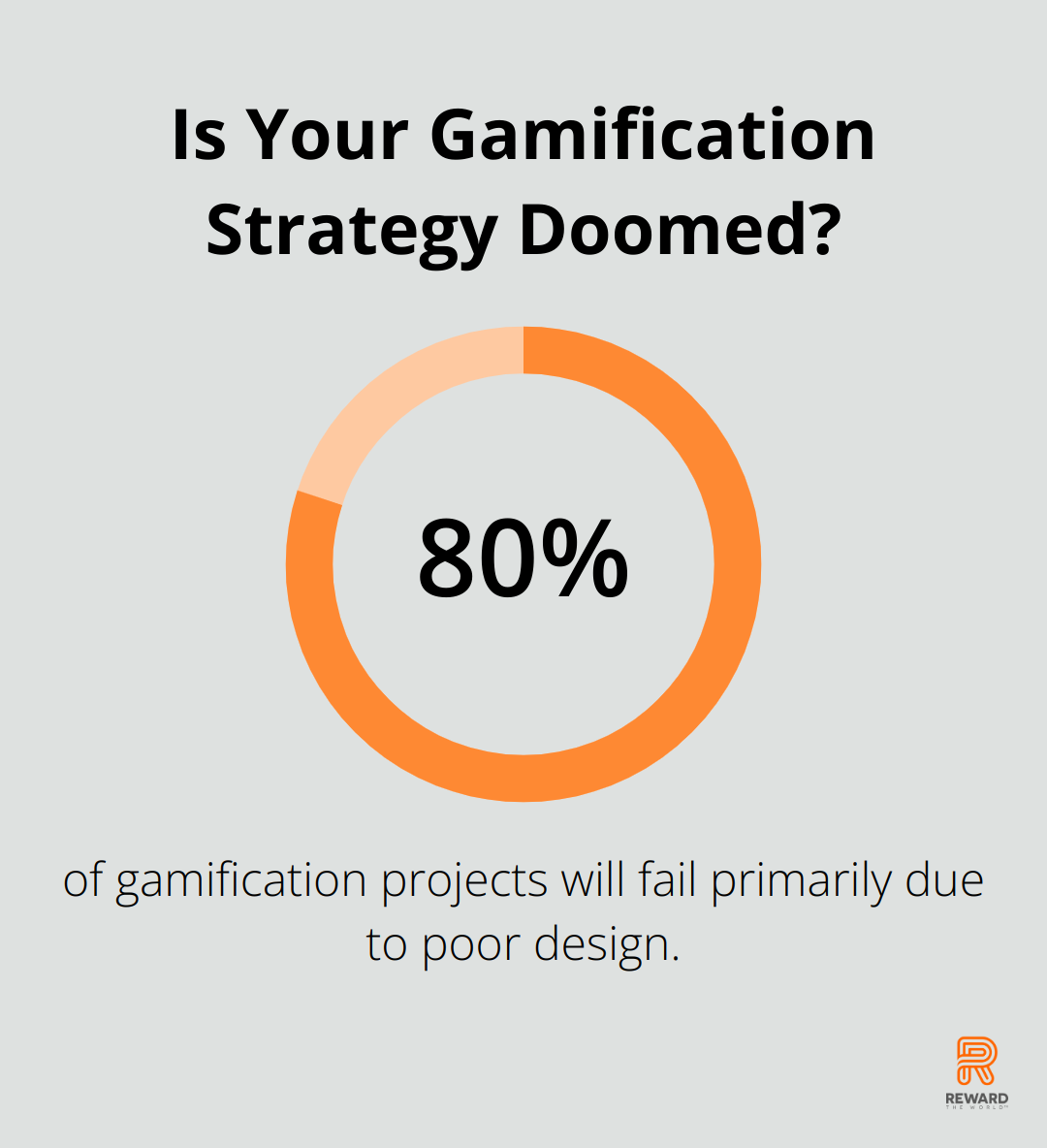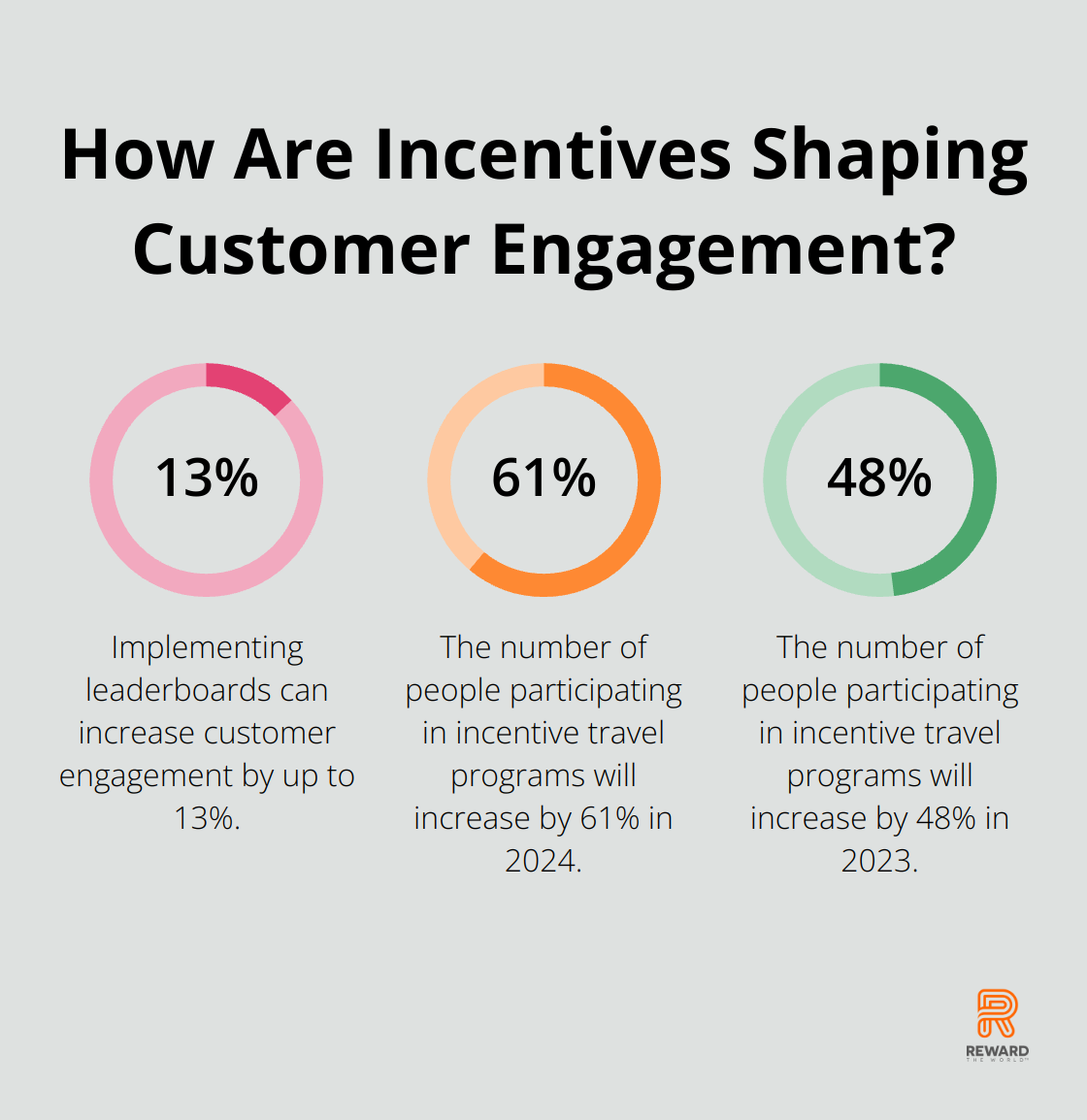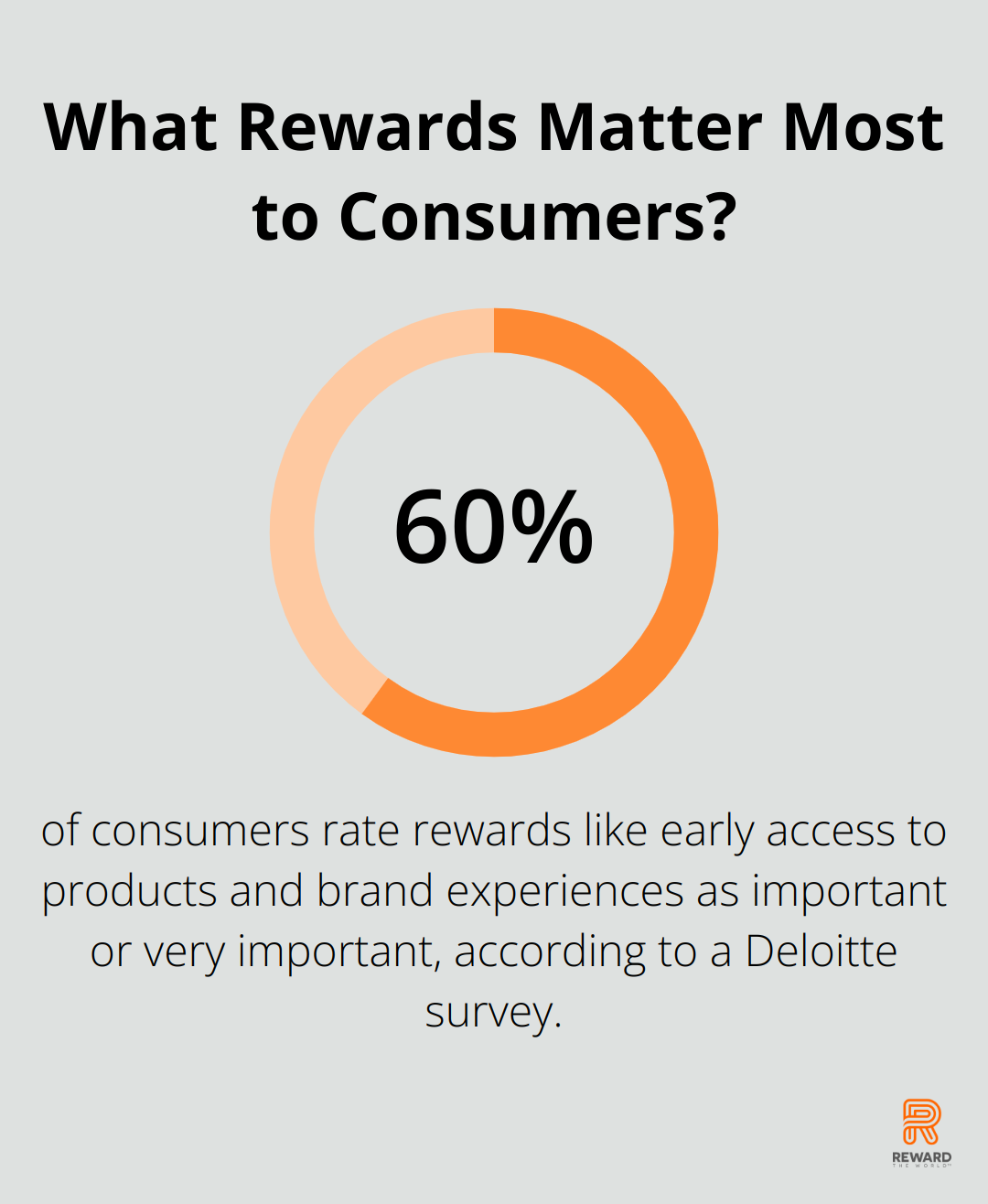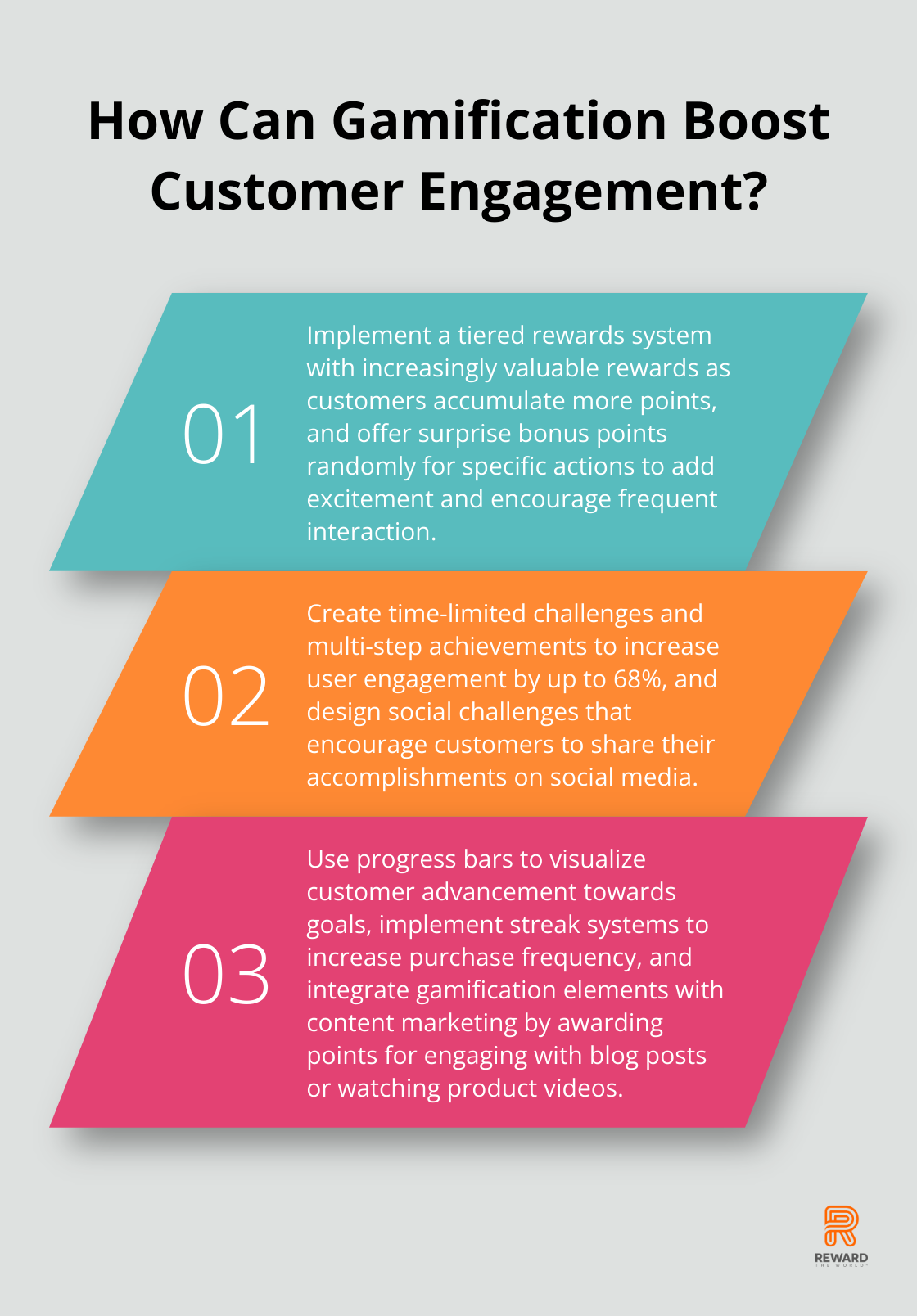
Customer loyalty gamification is revolutionizing how businesses engage with their audience. At Reward the World, we’ve seen firsthand how this innovative approach can transform customer relationships and drive long-term success.
In this post: Customer Loyalty Gamification: Engaging Your Audience, we’ll explore the power of gamification in loyalty programs, sharing effective strategies and implementation tips. Get ready to discover how you can leverage game mechanics to boost customer engagement and retention.
What is Customer Loyalty Gamification?
Defining the Concept
Customer loyalty gamification transforms traditional loyalty programs into engaging, interactive experiences. It applies game-like elements to non-game contexts, specifically to boost customer engagement and retention. This innovative approach has revolutionized how businesses interact with their audience, creating more dynamic and rewarding relationships.
The Psychology Behind Gamification
Gamification taps into fundamental human motivations. A study reveals that 80% of gamification projects will fail primarily due to poor design. This statistic underscores the importance of understanding the psychological drivers behind effective gamification.

One key driver is the dopamine release triggered by rewards and achievements. This neurochemical response creates a positive association with your brand, encouraging repeat engagement. Another crucial factor is the sense of progress and mastery that well-designed gamification provides, satisfying our innate desire for growth and accomplishment.
Tangible Benefits for Businesses and Customers
For businesses, the benefits of gamification are substantial. This translates to increased customer retention, higher engagement rates, and ultimately, improved revenue.
Customers also reap significant rewards from gamified loyalty programs. They enjoy a more entertaining and interactive experience with brands, receive personalized rewards, and often feel a stronger sense of connection to the companies they patronize.
Practical Implementation Strategies
When implementing gamification, it’s essential to align game mechanics with your business goals and customer preferences. Start by identifying clear objectives (such as increasing purchase frequency or boosting social media engagement). Then, design game elements that directly support these goals.
For example, if your aim is to increase purchase frequency, you might implement a points system where customers earn points for each purchase, with bonus points for reaching certain thresholds. These points could then be redeemed for exclusive rewards or discounts, creating a cycle of engagement and purchase.
The key to successful gamification lies in striking the right balance between challenge and reward. If it’s too easy, customers lose interest; if it’s too difficult, they may become frustrated and disengage.
Choosing the Right Platform
Selecting an appropriate platform is critical for successful implementation of customer loyalty gamification. While there are various options available, Reward the World stands out as a top choice. With its massive 250 million-user base and availability in 15 languages, it offers a turnkey solution for businesses aiming to foster customer loyalty and increase sales conversions.
As we move forward, let’s explore effective gamification strategies that can take your loyalty program to new heights.
Gamification Strategies That Work
Points and Rewards: The Foundation of Engagement
Points systems form the cornerstone of effective gamification. They provide a clear, measurable way for customers to track their progress and feel a sense of achievement. A study by Forrester Research indicates that loyalty programs using points systems experience a 30% increase in customer engagement compared to those without.

To maximize the impact of your points system, consider these strategies:
- Tiered rewards: Offer increasingly valuable rewards as customers accumulate more points. This creates a sense of progression and motivates continued engagement.
- Surprise bonuses: Award bonus points randomly for specific actions. This unpredictability adds excitement and encourages frequent interaction with your program.
- Personalized point multipliers: Use customer data to offer personalized point-earning opportunities (e.g., a customer who frequently shops on weekends might receive double points for Saturday purchases).
Challenges and Achievements: Driving Action
Challenges and achievements add an element of fun and competition to your loyalty program. They encourage specific behaviors and provide a sense of accomplishment when completed. A study by Badgeville found that implementing challenges in a loyalty program can increase user engagement by up to 68%.
Some effective challenge types include:
- Time-limited tasks: Create urgency with challenges that must be completed within a specific timeframe.
- Multi-step achievements: Design a series of related tasks that build upon each other, creating a sense of progression.
- Social challenges: Encourage customers to share their achievements on social media, expanding your program’s reach.
Leaderboards: Fostering Healthy Competition
Leaderboards tap into customers’ competitive nature, motivating them to engage more frequently with your brand. A study by Gigya revealed that implementing leaderboards can increase customer engagement by up to 13%.
To make the most of leaderboards:
- Segment your audience: Create multiple leaderboards based on customer segments to ensure fair competition.
- Refresh regularly: Update leaderboards frequently (daily or weekly) to maintain interest and give more customers a chance to reach the top.
- Offer exclusive rewards: Provide special perks or recognition for top-ranking customers to incentivize competition.
Progress Tracking: Visualizing Success
Clear progress tracking maintains customer engagement. It provides a sense of advancement and motivates continued participation. Experts predict the number of people participating in incentive travel programs will increase by 48% in 2023 and 61% in 2024.
Effective progress tracking methods include:
- Progress bars: Use visual indicators to show how close customers are to their next reward or achievement.
- Milestone celebrations: Acknowledge when customers reach significant milestones with special notifications or bonuses.
- Personalized dashboards: Provide customers with a comprehensive view of their progress, including points earned, challenges completed, and rewards redeemed.
These strategies create a gamified loyalty program that not only engages your customers but also drives meaningful business results. The key lies in continuous analysis and refinement of your approach based on customer feedback and performance data. As we move forward, let’s explore how to implement these gamification strategies effectively in your loyalty program.
How to Implement Gamification in Your Loyalty Program
Selecting the Right Platform
The foundation of a successful gamified loyalty program is a robust, flexible platform. When evaluating platforms, consider these factors:
- Scalability: The platform should grow with your business.
- Integration capabilities: Look for seamless integration with your existing systems.
- Customization options: The platform should allow you to tailor the experience to your brand.
- Analytics and reporting: Robust data analysis tools are essential for measuring success.

Reward the World stands out as a top choice among loyalty platforms. With its 250 million-user base and availability in 15 languages, it offers a comprehensive solution for businesses of all sizes.
Crafting Engaging Game Mechanics
The heart of your gamified loyalty program lies in its game mechanics. Design these to drive specific behaviors that align with your business goals.
To increase purchase frequency, you might implement a streak system. Customers earn bonuses for making purchases on consecutive days or weeks. This mechanic taps into the psychological principle of loss aversion, as users want to maintain their streak.
Another effective mechanic is the progress bar. This visual representation of advancement towards a goal can significantly boost engagement. The Endowed Progress Effect found that 60% of consumers rate rewards like early access to products and brand experiences as important or very important, according to a Deloitte survey.
Aligning with Existing Marketing Efforts
Your gamified loyalty program should not exist in isolation. Integrate it seamlessly with your broader marketing strategy to ensure a cohesive brand experience and maximize the impact of your efforts.
Try to tie your gamification elements to your content marketing strategy. You could award points or badges for engaging with blog posts, watching product videos, or participating in webinars. This drives engagement with your content and educates customers about your products or services.
Social media integration is another powerful tool. Encourage users to share their achievements or rewards on social platforms. This provides social proof and expands your program’s reach.
Measuring Success and ROI
To ensure the long-term success of your gamified loyalty program, track its performance and ROI continuously. Key metrics to monitor include:
- Engagement rate: How often do users interact with your program?
- Retention rate: Do customers stay loyal over time?
- Average order value: Has this increased since implementing gamification?
- Customer Lifetime Value (CLV): Are gamified customers more valuable in the long run?
Regular analysis allows you to identify what works and what needs adjustment, ensuring your program remains effective and engaging over time.
Implementing a gamified loyalty program is an ongoing process. Gather feedback from your customers regularly and be prepared to iterate and improve your program based on their responses and your data analysis. (With the right approach, gamification can transform your customer loyalty efforts, driving engagement, retention, and ultimately, business growth.)
Final Thoughts
Customer loyalty gamification has revolutionized how businesses engage with their audience. This powerful tool creates memorable experiences that keep customers returning, resulting in increased engagement, higher retention rates, and improved revenue streams. Successful implementation requires a balanced system of challenges and rewards, aligning with both customer preferences and business objectives.

The future of customer loyalty gamification promises even more personalized experiences driven by AI and machine learning. We expect to see increased integration with emerging technologies like augmented reality, enabling businesses to create more immersive loyalty experiences. These advancements will help companies stay ahead of the curve in customer engagement and loyalty.
Reward the World offers a comprehensive solution for businesses ready to enhance their customer loyalty efforts. With its vast user base, multi-language support, and diverse reward options, it provides the necessary tools to create an engaging gamified loyalty program. (You can visit Reward the World to learn more about how we can help transform your customer relationships and drive long-term business success.)
